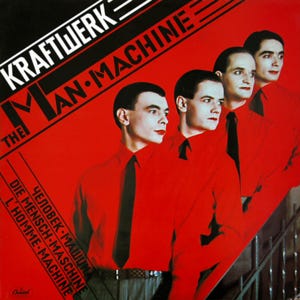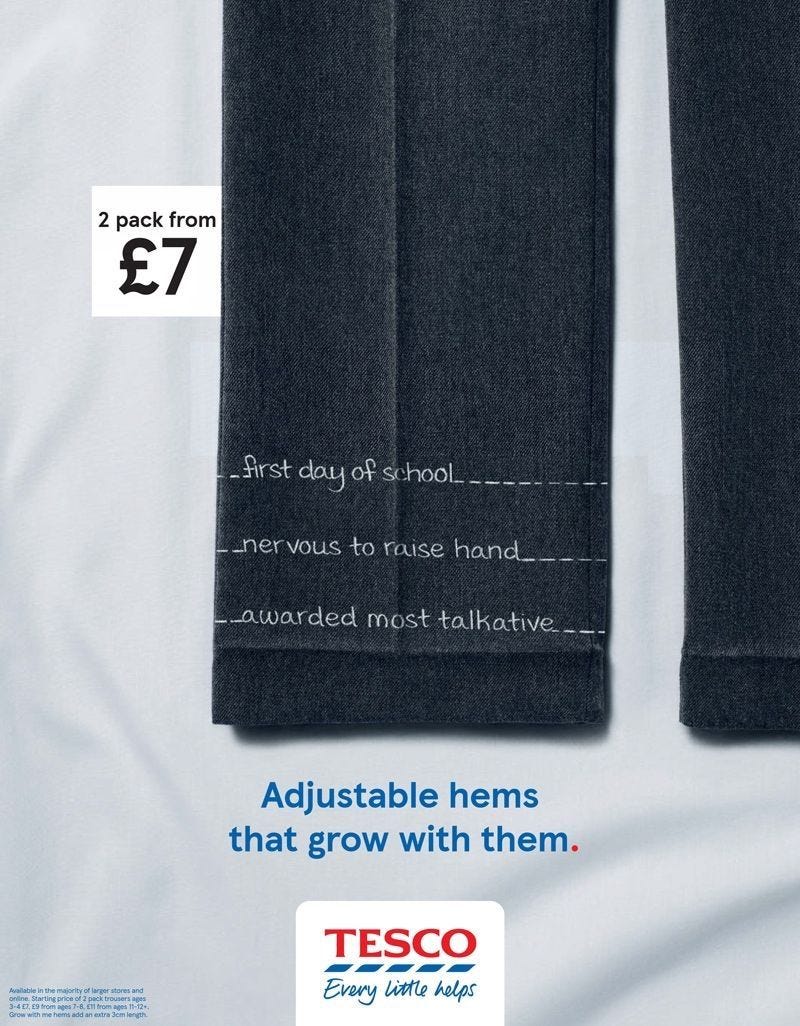Really, when you break it down, it's all Kraftwerk
Or, something like that.
“We’re sick of you getting shit work.”
That was the guiding mantra in my head when we set up Hampson Nattan Williams. Martin and Ben probably had some lofty ideals about raising standards and all that worthy stuff, but I was just sick of seeing businesses pay good money for shit copy.
The problem is, how do you define shit work?
You know it when it’s in situ - it’s the stuff that’s not generating any leads, enquiries, cold hard cash. But what about that weird in-between point when you have a draft in front of you, and suddenly either the client or the other marketing geniuses doing your proofing disagree?
How do you turn that quality conversation into a question of fact over opinion?
It took us a while to work that out. We spent far too many hours arguing between us about whether the way I did things was best (yes, always), whether Ben had a point (sometimes), or if in fact Martin was correct (on occasion, but when he’s right he’s right).
Then in comes the client. The person with the least amount of copywriting experience, but the biggest stake. They’re paying the piper, so how do you convince them they can’t call the tune?
The answer, as it usually is, is process. Namely a model. A model we came up with to judge the efficiacy of copy before all that live testing.
It was definitely a collaborative effort, and not Hampson seeing his arse, getting sick of the bickering, and backfilling an acronym to give us a model we could be proud of.
How do you know if the work’s any good? You make sure it’s CRAFTED1.
To be CRAFTED, a message must be:
C - Clear and Concise
R - Resonant
A - Authentic
F - Flexible
T - Timeless
E - Evocative
D - Distinct
Yes, I know it’s technically CCRAFTED, but that’d ruin the acronym.
It seems simple enough. You look at what you’ve done, and ask those seven questions. Seven yeses, the work’s good. A couple of nos, back to the drawing board.
And those questions might be simple, but they really cut through the noise.
Clear/Concise. Easy enough. If your customers can’t work out what you’re saying, and it takes too long to explain, it’s shit work.
Resonant. OK, the customer gets it. But do they care? Is it landing? If it doesn’t resonate, it’s shit work.
Authentic. Tone, personality, all the stuff people pay lip service to and fail to implement. Get that right, and you’re on to a winner.
Flexible. This one’s crucial for top level key messaging. You cannot hang your hat on one aspect of your business with a message that ignores key services, strengths and offerings. You need flexibility. It stops your message becoming outdated. Speaking of which…
Timeless. The world moves fast. If the work you’ve paid for will be totally irrelevant in a week’s time, then it’s going to rapidly decline from great work to the realms of the useless.
Evocative. Is it moving the needle? Are people responding to it? Does it move them to action, create an emotional response? Work that resonates - that they care about - but that doesn’t evoke desire? It’s not good work.
Distinct. Too many businesses sound like too many other businesses. If you’re not standing out from the crowd, you lose out to people who are.
Simple, memorable. A model you can use to judge the quality of the work you pay for.
Because when you break it all down, it’s just a matter of craft and work.
Want to see CRAFTED applied to some great messaging? I’ve written that threatened deep dive into Columbia Sportswear over on our blog.
Something mint - turning a negative into a positive with Tesco
You know who’s good at judging whether work is shit or not? Vikki Ross. One of my copywriting heroes. So when she picks out an advert as being great even when she’s not in the target audience, I immediately nick it for the newsletter.
I mean, this is some smart work. And you know what, I think it’s pretty damn CRAFTED too.
C - Clear and Concise?
Six words of copy to do the lifting there. Six.
Key benefit front and centre - and it explains the feature too.
R - Resonant
Every parent knows the struggle of needing to buy clothes for kids who sprout like weeds
Seriously, my mum once wrote to Teletext complaining about paying VAT on my clothes because at 14 and 6’3”, I was in an “adult size” school uniform
A - Authentic
Come on. My mum wrote to Teletext. You don’t get a more authentic pain point than that.
F - Flexible
Can you apply the “growing with them” message across all the Back to School range? Sure.
Does it apply to every age from nursery to fifth year? Yes.
T - Timeless
Not to beat the Teletext drum, but that was in 1999. That’s 26 years ago. And it STILL resonates.
E - Evocative
On so many levels. There’s the obvious one - the pain of buying clothes for kids.
And the really deep emotional one - the child growing as a person, from shy kid on the first day to not shutting up.
Finally, if you’re the sort of cheapskate who writes to Teletext about the price of uniforms, it’s two for the price of a pint. Come on now.
D - Distinct
It’s very Tesco, isn’t it? It’s a little thing - you can make the trousers longer, but it’s helpful. Tesco’s brand down to a tee. M&S wouldn’t run this. George at ASDA might do something rough and ready about not wearing holes in the knees making a slide tackle on gravel.
If only they made these in a 37” inside leg, I’d be heading down there to stock up.
Admit it, you’ve got this far and the subject line’s only just made sense.






